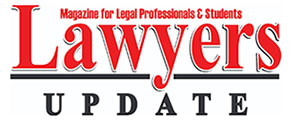Approach the lectern unencumbered; adjust it to your height; stand erect and make eye contact with the court.
Approach the lectern in a brisk but unhurried manner.
Don’t come laden with books and papers: Lengthy materials that you need for quotation in argument, or for response to questions, should be ready at hand-perhaps on a nearby table-but should not be toted to the lectern.
We recommend that you approach the lectern with a single manila folder with no papers inside. Instead, write your bare-bones notes inside the folder itself perhaps with the most telling record references listed. If you’re overcome by brain-freeze, a glance at your notes should jog your mind. And since you have no loose papers inside, there’ll be no risk of dropping papers onto the floor. The manila folder has the added advantage of closing up, so that others won’t be privy to your notes as they lie on the counsel table.
If you’ve taken the trouble to view the courtroom beforehand, you’ll know whether the lectern is adjustable, and if so how. It is important that you fix it, if possible, to a comfortable height, not only because that makes it easier for you to consult your notes while you speak, but also because that may make it easier for the court to hear: the height of the microphone is often adjusted with the lectern.
Stand erect. Pause briefly before you open your mouth.
Make eye contact with the judge or judges. Better to skip the smile, which may come across as nervous or condescending.




